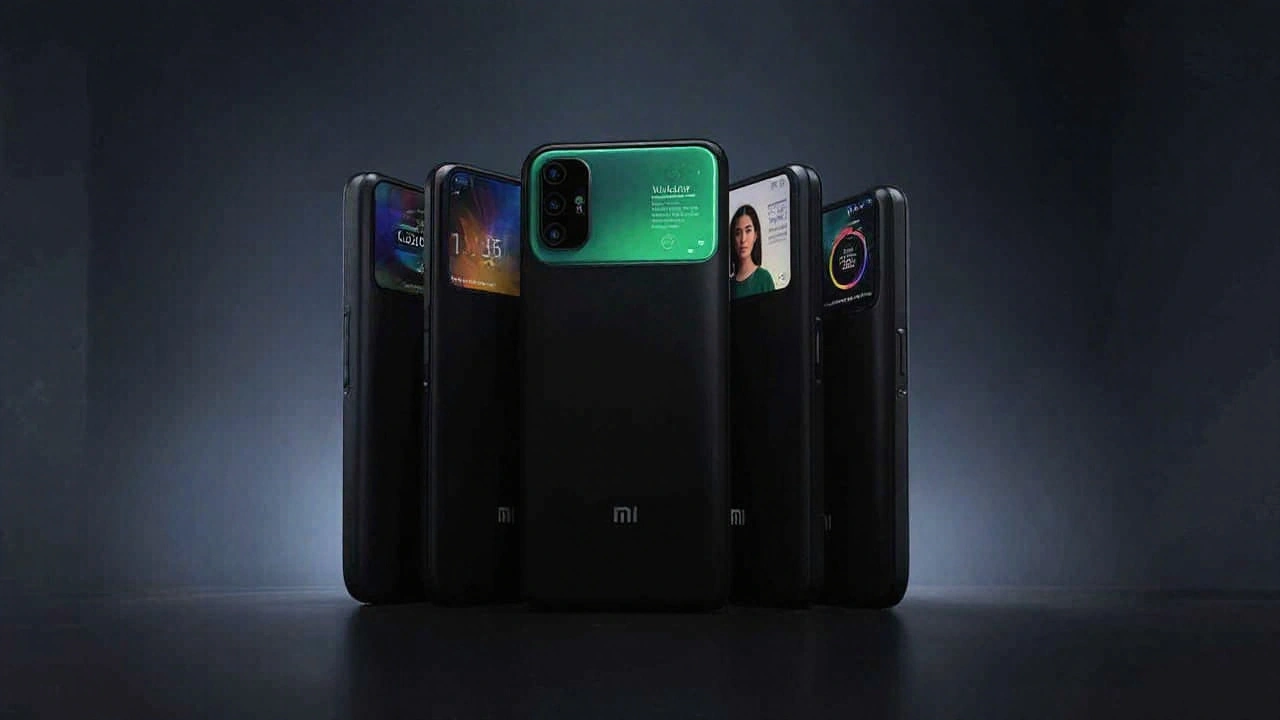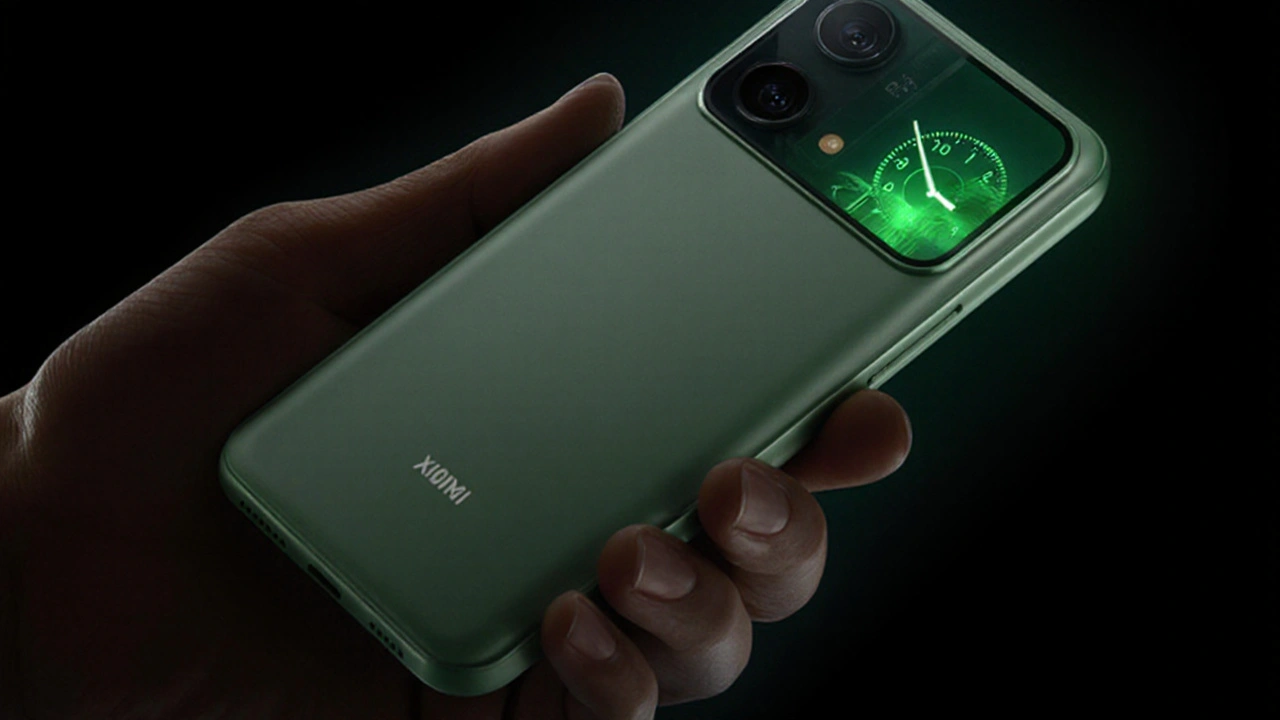What makes the Xiaomi 17 series different?
When Xiaomi stepped onto the stage with the 17 series, it didn’t just add a new chip or a slightly better camera. The headline is the Xiaomi 17 Pro – a phone that literally lets you work, play and communicate from two screens at once. The rear side isn’t a gimmick; it’s a 3.4‑inch touchscreen that sits snugly inside the unibody chassis, making it the biggest back‑screen ever on a smartphone.
On the front, the Pro Max model carries a 6.9‑inch flat LTPO AMOLED display that pushes 120 Hz refresh rates and peaks at a blinding 3,500 nits. That kind of brightness means you can read a map in midday sun without squinting. Under the hood lives Qualcomm’s Snapdragon 8 Elite Gen 5, built on a 3nm process, which promises desktop‑grade performance for heavy games, AI tasks and multitasking across both screens.
The battery is another bold move: a 7,500 mAh cell that dwarfs the usual 4,500–5,000 mAh flagships. Paired with 100‑W wired fast charging and 50‑W wireless charging, the phone can go from 0 to 80 % in under half an hour, keeping the dual‑screen experience from becoming a power‑drain nightmare.
- Rear Dynamic Back Display – 3.4‑inch capacitive touchscreen.
- Front display – 6.9 inches, 120 Hz, 3,500 nits, LTPO AMOLED.
- Processor – Snapdragon 8 Elite Gen 5 (3nm).
- Battery – 7,500 mAh with 100 W wired / 50 W wireless charging.
- Camera – Triple 50 MP Leica system; Pro Max adds 5× periscope telephoto lens.
- OS – Android 16 with Xiaomi’s HyperOS dual‑screen optimization.
All these pieces sit on a frame that also houses a new line of accessories – rugged cases that add physical gaming triggers, magnetic mounts that turn the phone into a portable console, and even stylus‑compatible grips for note‑taking on the back screen.

How the dual‑screen works in real life
Most dual‑screen phones in the past suffered from clunky software that treated the second display like an afterthought. Xiaomi tackled this by weaving the rear screen into the core UI of HyperOS. The result is a set of workflows that feel natural rather than forced.
For selfie lovers, the rear screen becomes a live viewfinder. Point the main camera at yourself, see the framing on the back panel, and adjust lighting on the fly. Travelers can enable a face‑to‑face translation mode: speak in your language, and the translated text pops up on the backside for the other person to read, cutting down on awkward gestures.
Content creators get a boost, too. Vloggers can monitor comments, switch camera angles, or trigger a quick “record” button without ever covering the primary display. Photographers on shoots can hand the device to clients, letting them swipe through proofs on the rear screen while the photographer continues shooting on the front.
Gamers see the most dramatic benefit. The rear touchscreen can serve as an extra set of controls – think a virtual D‑pad or quick‑action buttons – while the front screen renders the main game world. Coupled with AI‑enhanced power management, the phone dynamically reassigns resources to keep frame rates smooth, even during marathon sessions.
Even everyday tasks become simpler. Imagine scrolling through a recipe on the back while watching a cooking video on the front, or checking stock tickers while replying to emails. The OS lets you drag apps between screens, create split‑view panes, and set custom shortcuts that launch specific functions on the rear display.
All of this is anchored by the massive battery. Users report that typical day‑to‑day usage – social media, streaming, gaming with the dual panels – stays comfortably within a single charge. When the battery does dip, the 100‑W charger tops it up in the time it takes to brew a coffee.
In short, Xiaomi isn’t just adding a novelty rear screen; it’s rethinking how a phone can be a two‑sided tool. Whether you’re a frequent traveler, a creator who streams daily, or a mobile gamer looking for a console‑grade experience, the 17 series offers a practical, performance‑driven answer that goes beyond the hype.

Madhuri Singh
September 28, 2025 AT 20:56Lakshmi Narasimham
September 29, 2025 AT 21:25Amanda Dempsey
October 1, 2025 AT 02:27Jessica Herborn
October 2, 2025 AT 12:32Siphosethu Phike Phike
October 4, 2025 AT 07:56Peter Novák
October 5, 2025 AT 06:52Mitchell Ocran
October 7, 2025 AT 06:03Todd Gehrke
October 8, 2025 AT 12:39Allison Brinkley
October 8, 2025 AT 19:54Ghanshyam Kushwaha
October 9, 2025 AT 21:55eliana levi
October 11, 2025 AT 05:54Brittany Jones
October 13, 2025 AT 05:50SUBHANKAR DAS
October 15, 2025 AT 01:03Secret Lands Farm
October 15, 2025 AT 03:25Tamir Duberstein
October 16, 2025 AT 18:13John Bothman
October 17, 2025 AT 19:48Dinesh Gupta
October 19, 2025 AT 11:39Ruth Ellis
October 19, 2025 AT 13:37